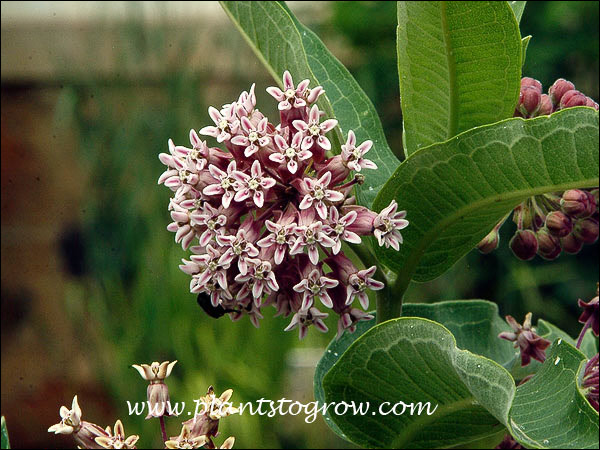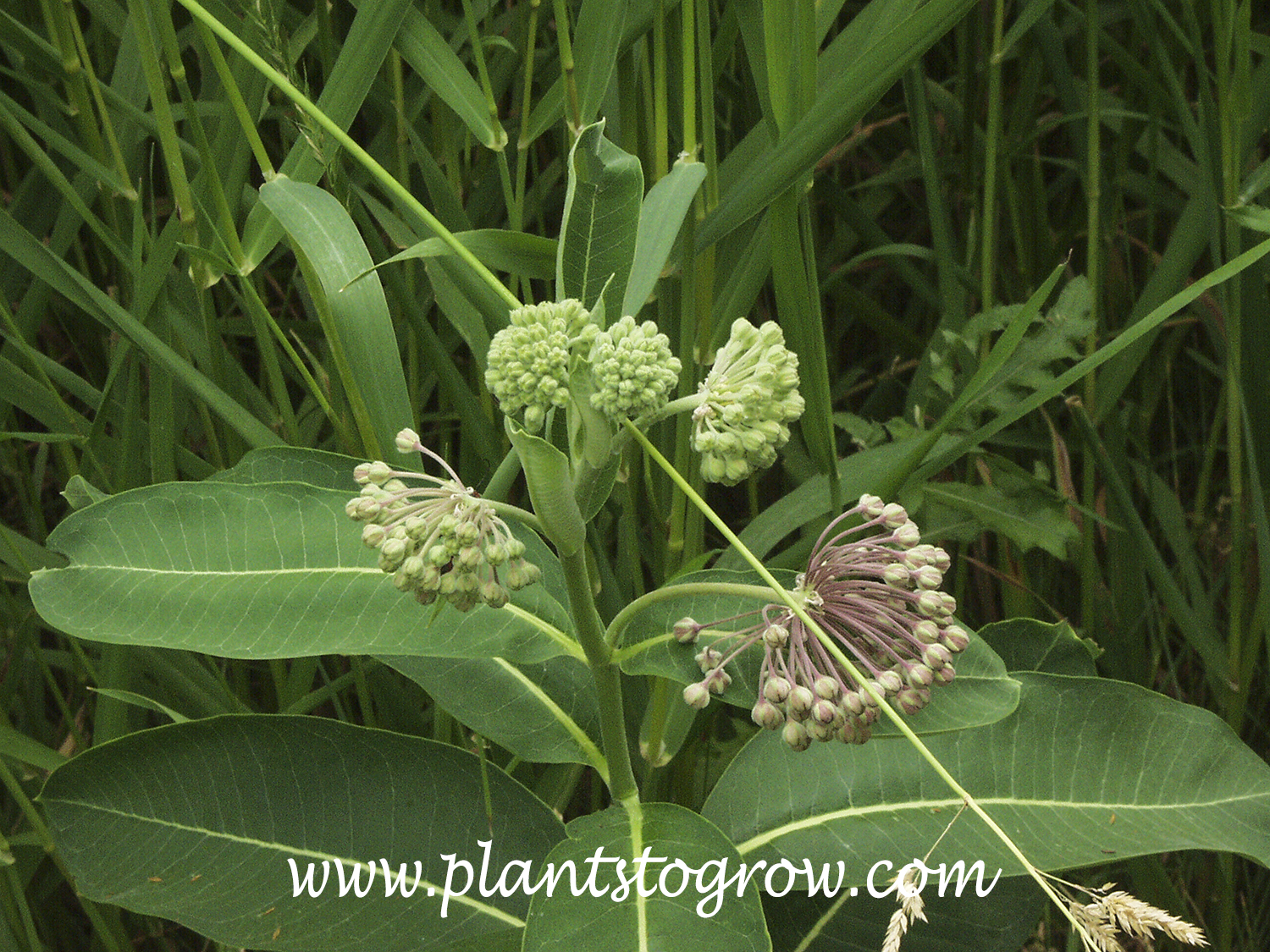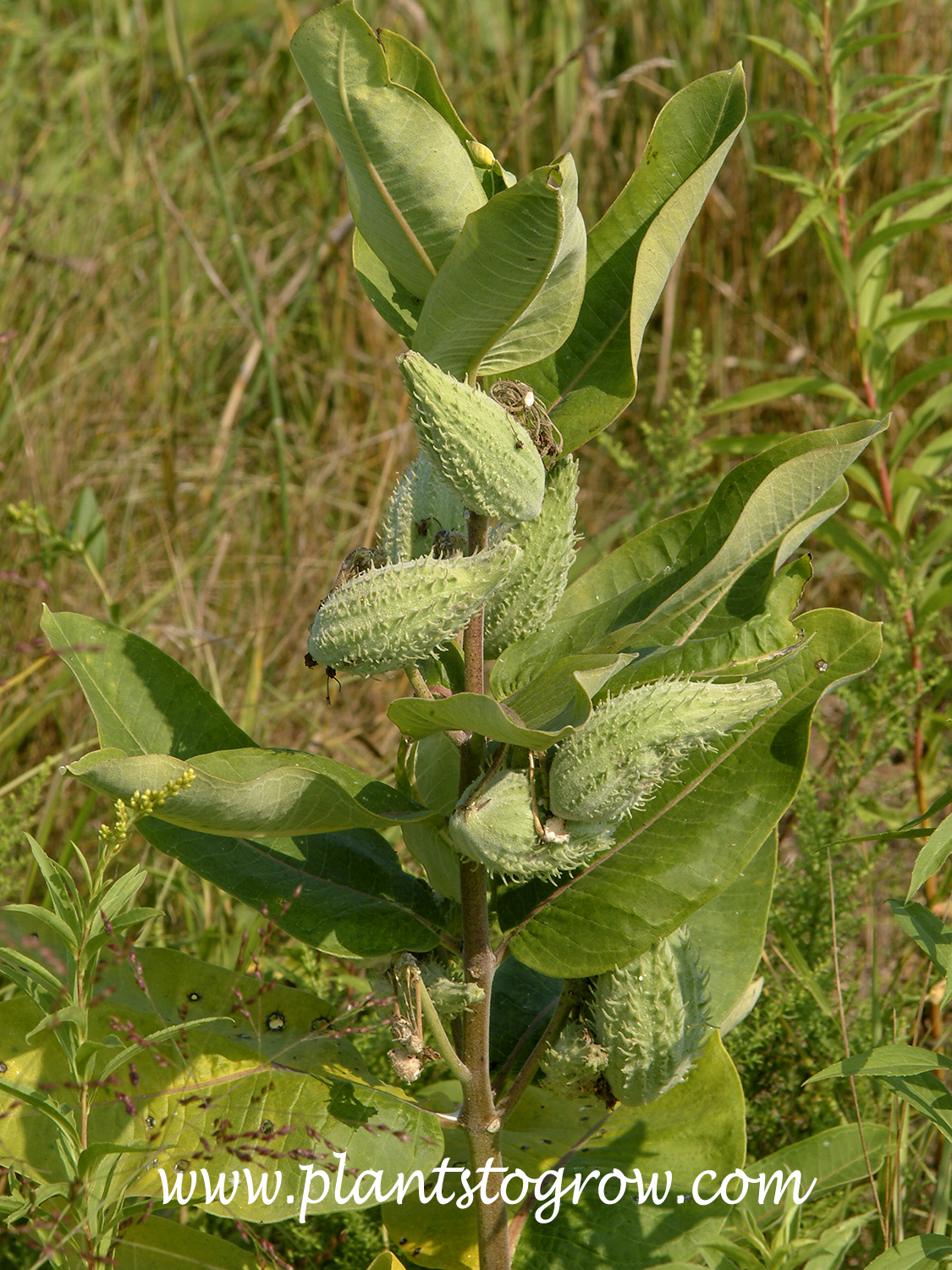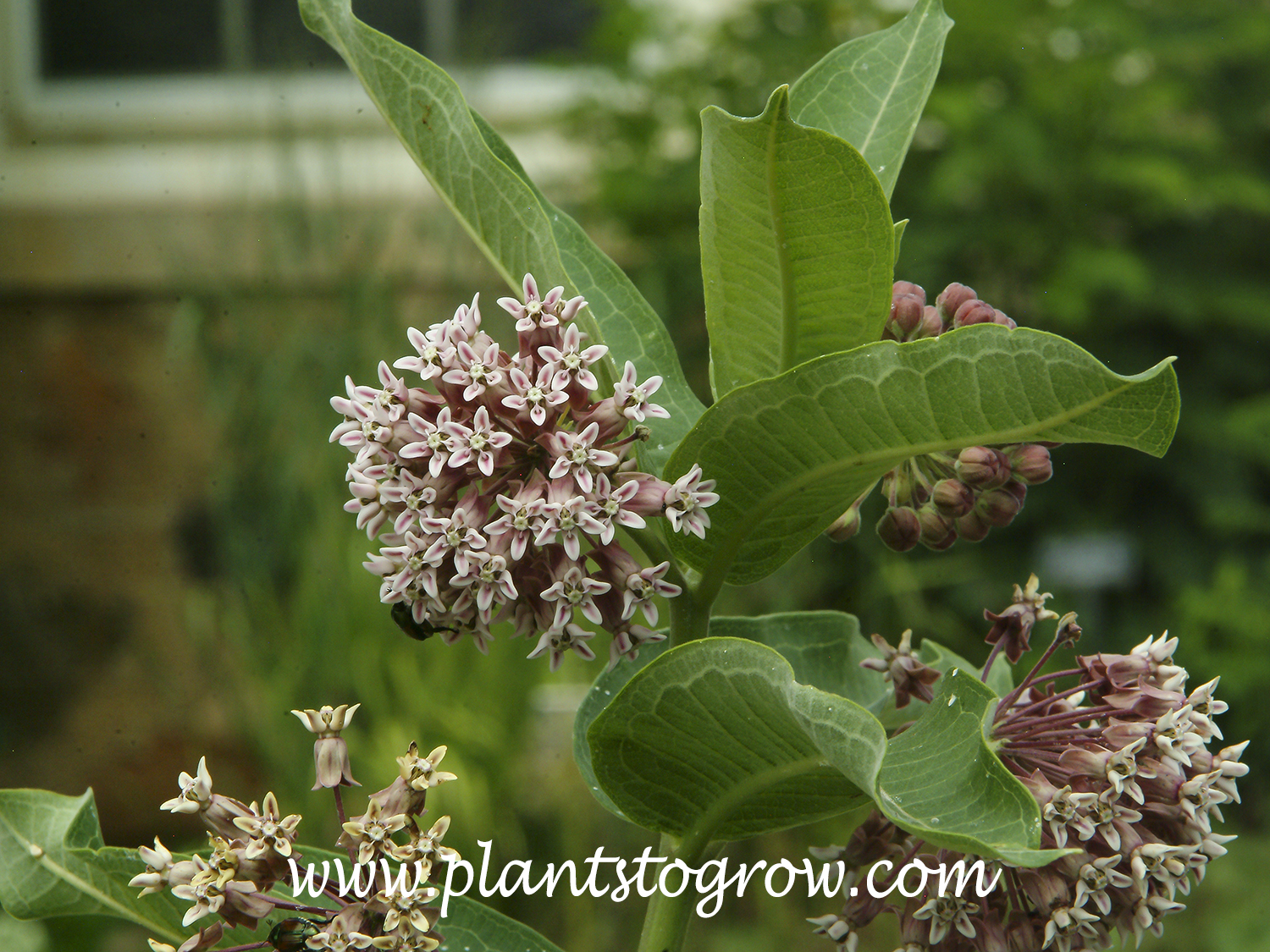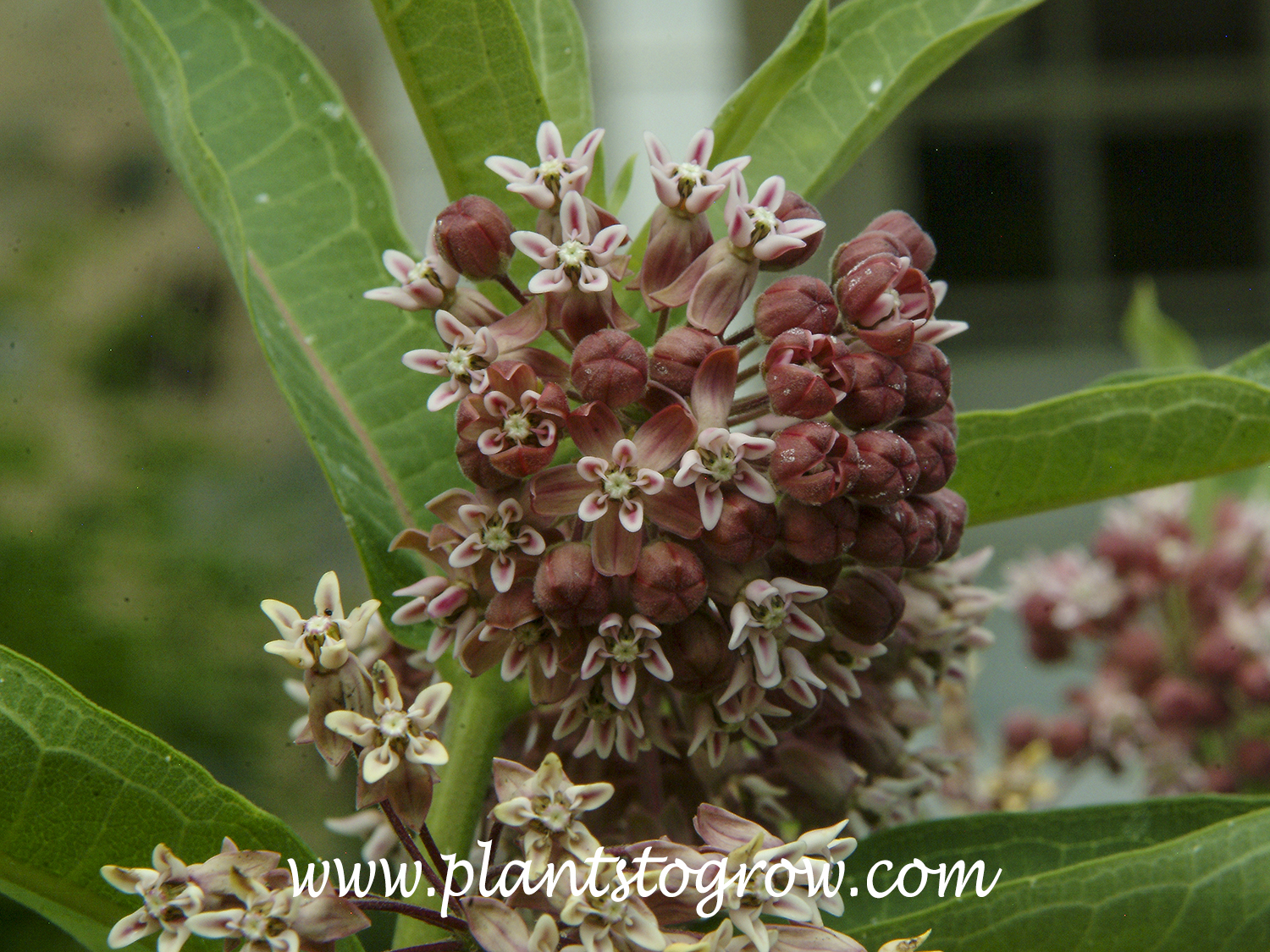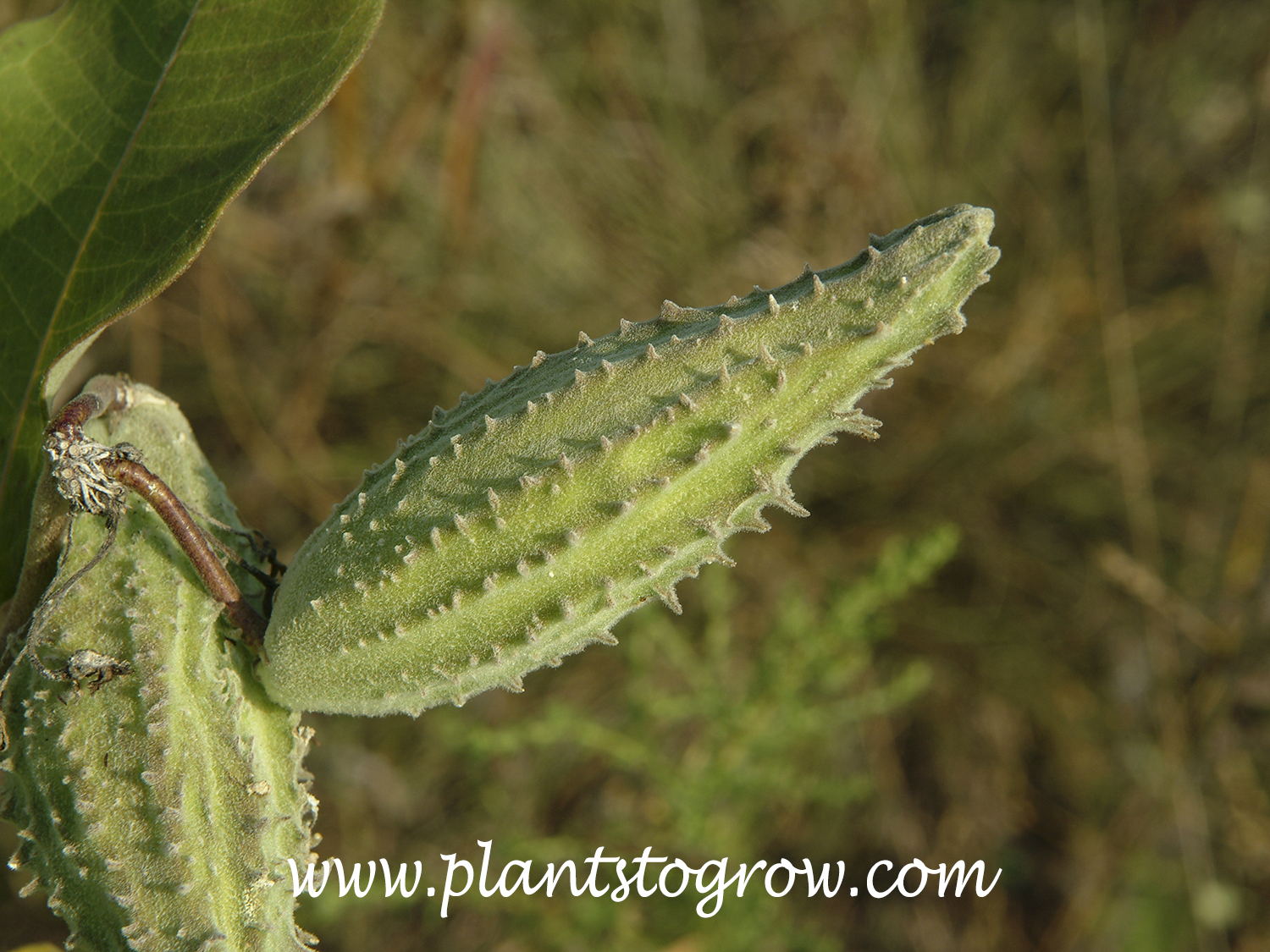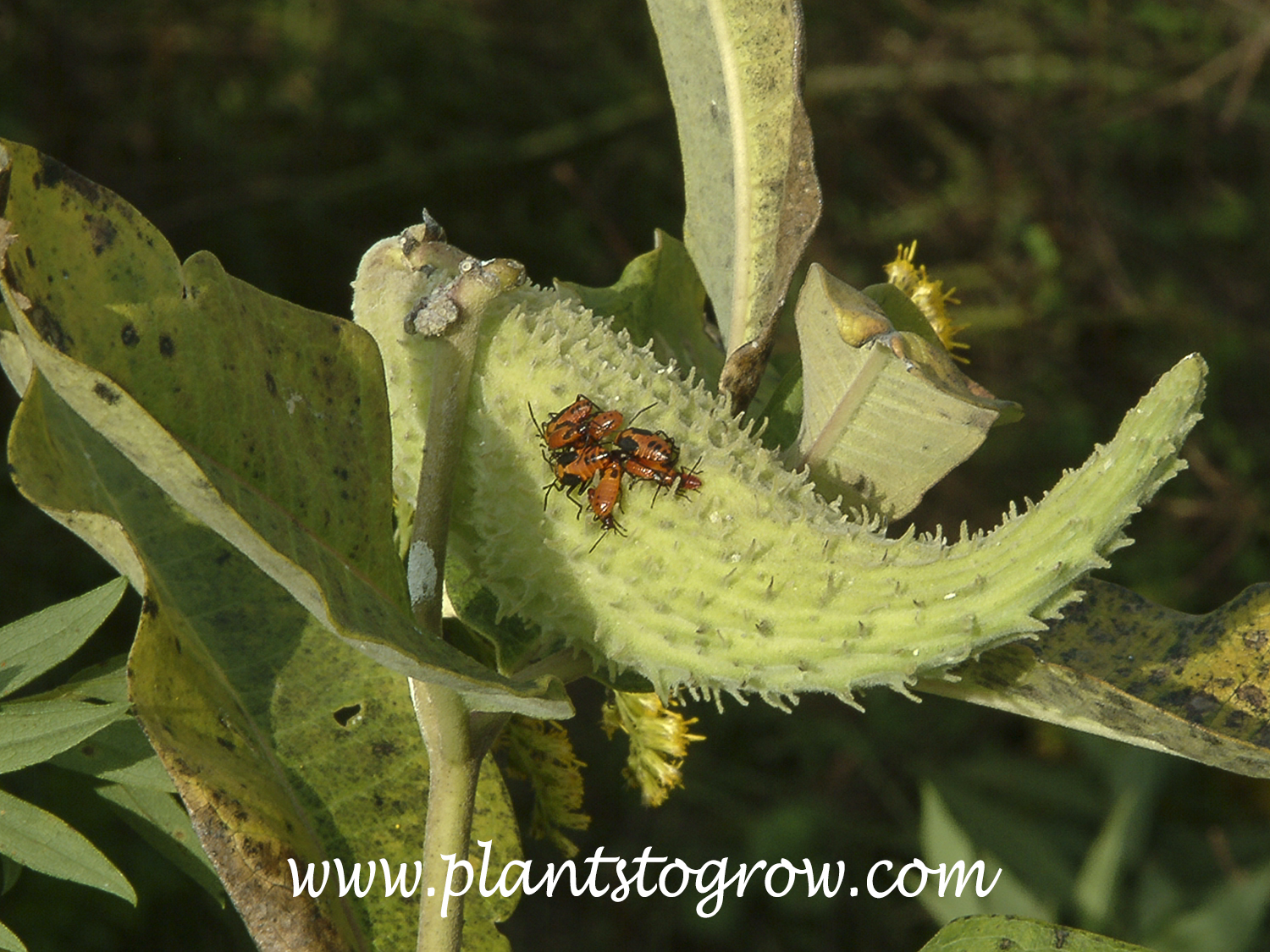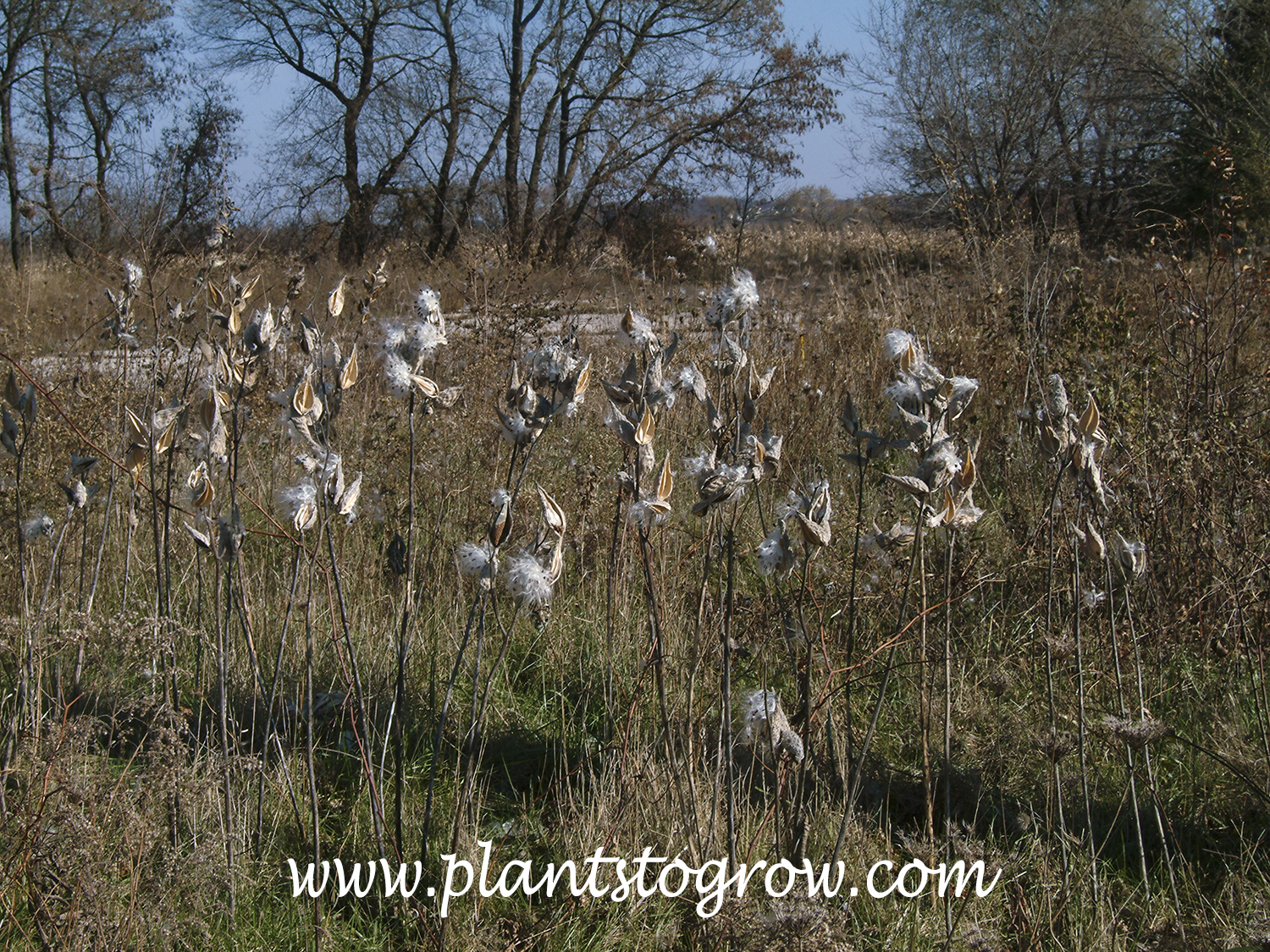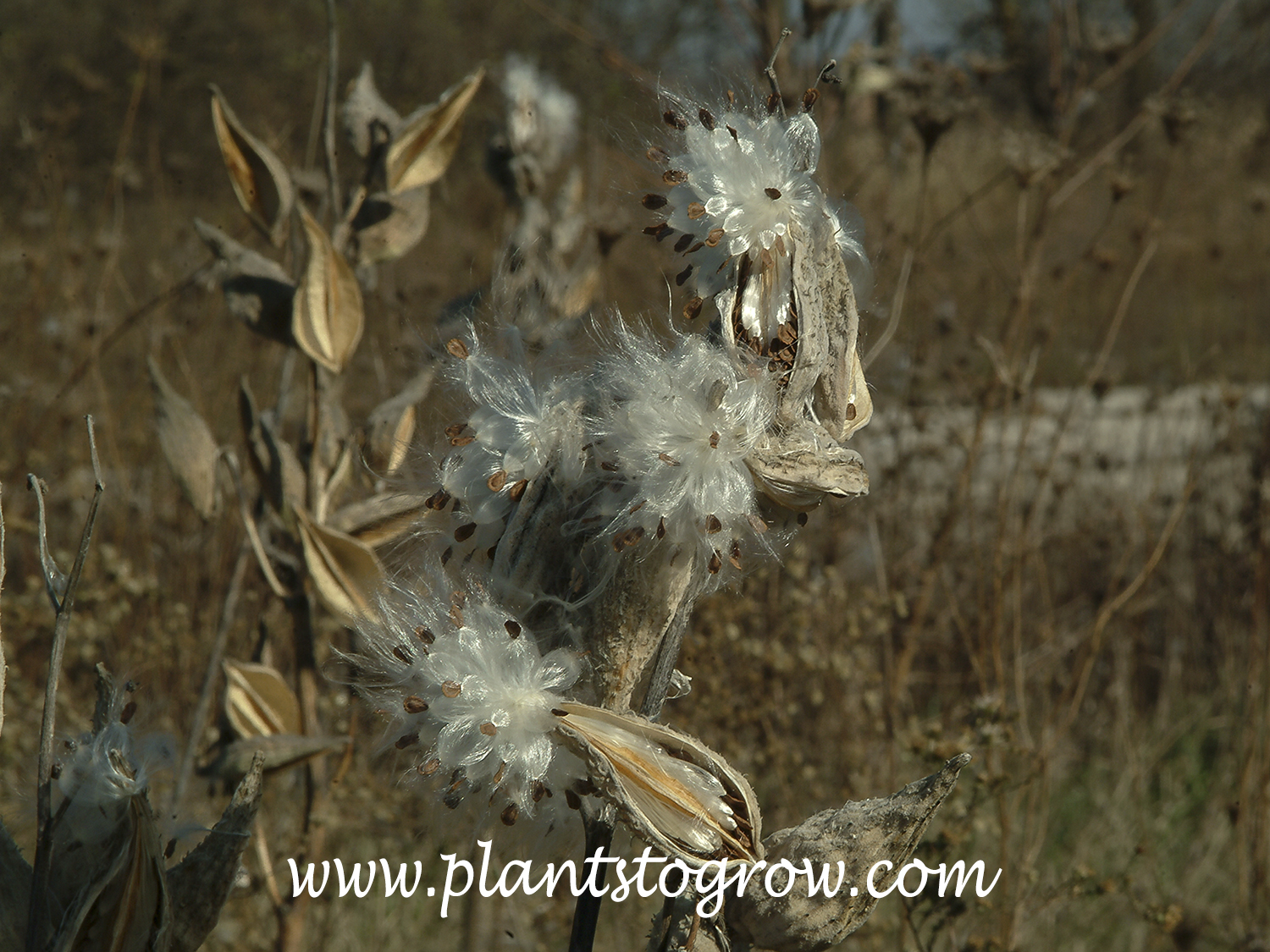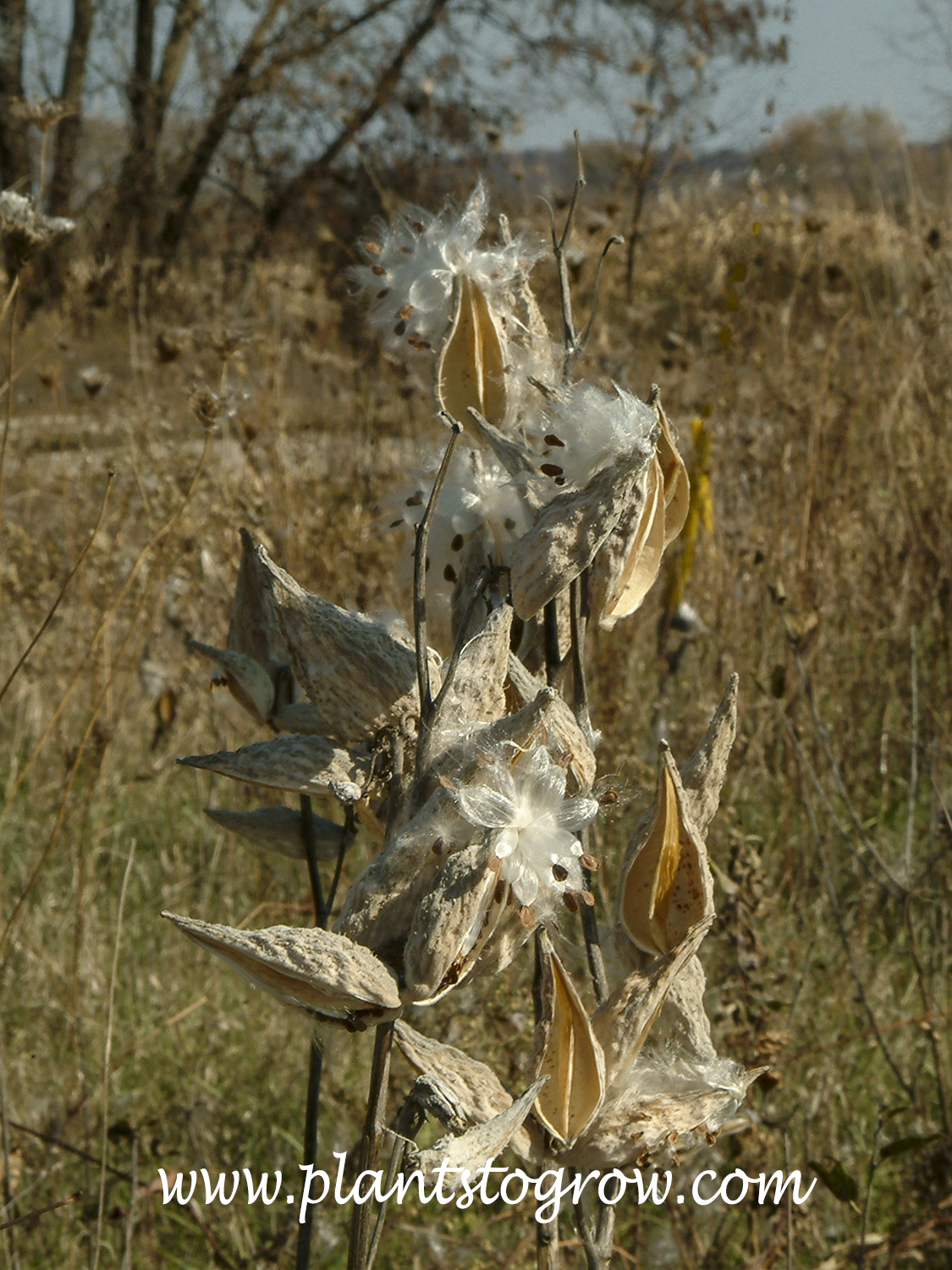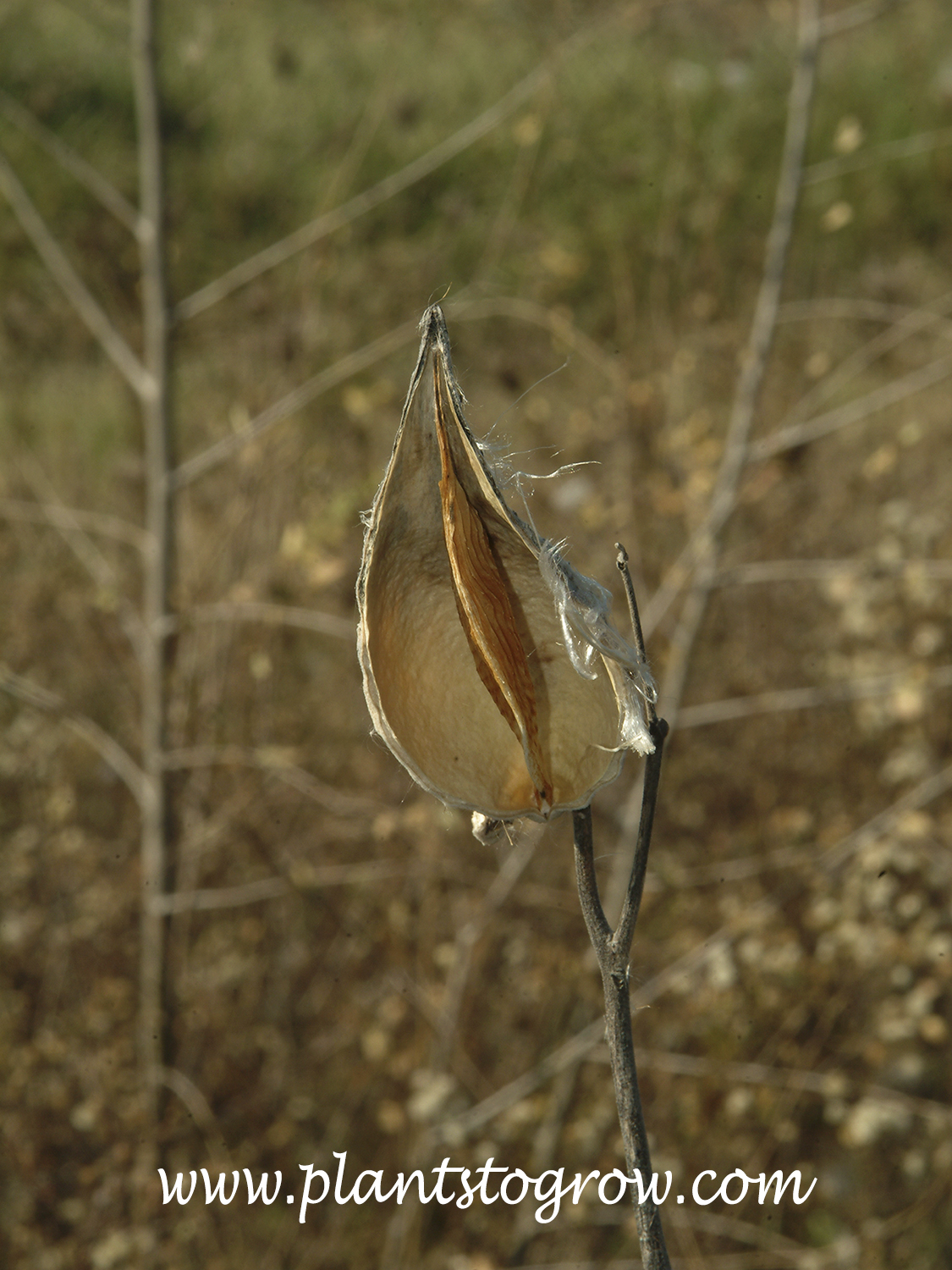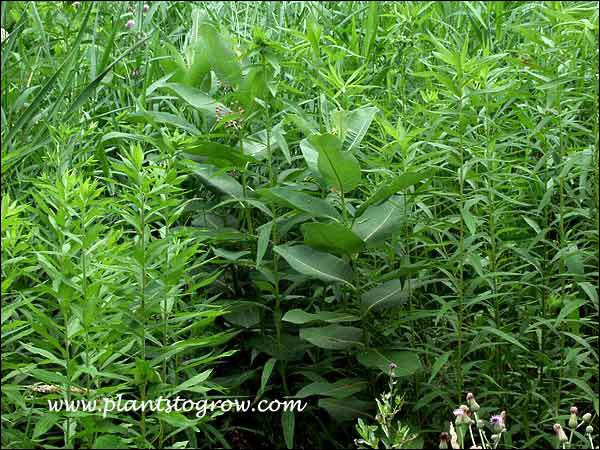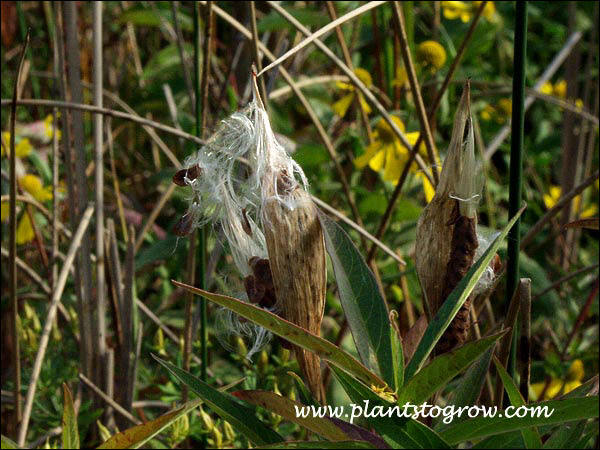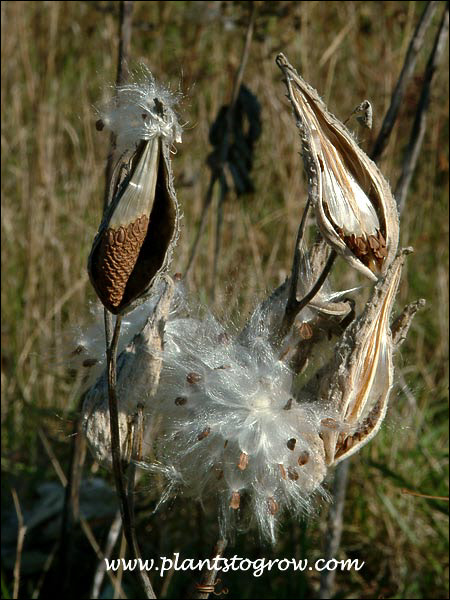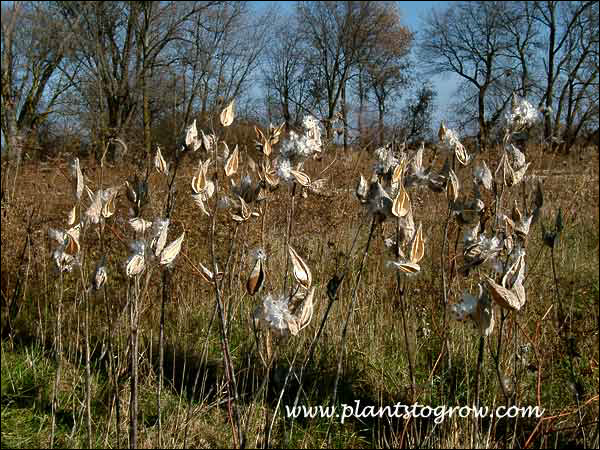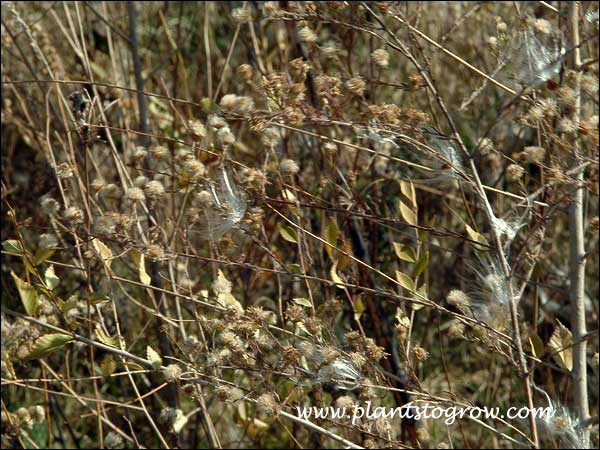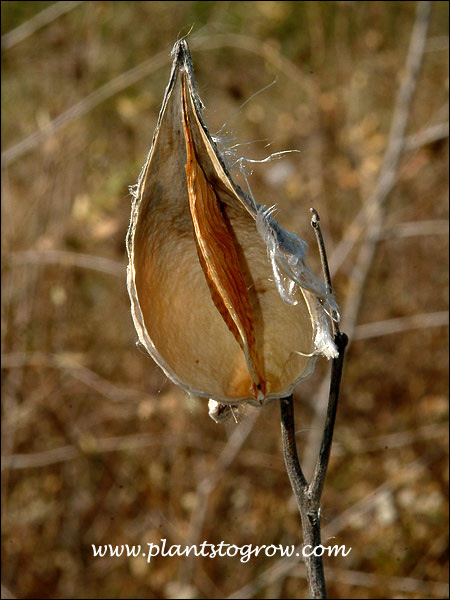| Description | Milkweed (Asclepias syriaca) Most everyone has broken open a milkweed seed pod and watched as the hundreds of seeds, with their fuzzy attachments, float away. Essential plant to the Monark Butterfly. It can be aggressive and invasive in gardens. |
|---|---|
| Plant Type | Wild Flowers, Site author's observations |
| Sunlight | The references list it as full sun to shade. I have seen it mainly growing in full sun. |
| Moisture | normal |
| Soil & Site | I have seen it growing on Lake Superior's sandy shores and in southeastern Wisconsin's open fields. |
| Flowers | lavender to pink, purple flowers forms a somewhat drooping dome, pollinated when the insects visit the plant and get the pollen sacs stuck to their legs. |
| Fruit | a seed pod called a follicle splits along one seem, seeds have an attached pappus for wind seed dispersal, dried follicles are valued for dried arrangements and other ornamental use |
| Leaves | wounds or removed leaves will bleed a sticky, toxic sap. |
| Stems | rhizomes |
| Roots | deep-rooted |
| Dimensions | Listed as reaching 2-5 feet. I have seen them mostly in the 2-3 foot range. |
| Propagation | cold stratified seeds, rhizome cutting |
| Misc Facts | The milky sap of this plant contains cardiac glycosides, which is not good to ingest. The Monarch Butterfly lays its eggs on this plant, and then the larva eats the milky sap and becomes toxic to other animals that may eat it. Some birds use the fibers from old plants as nesting material. AKA: common milkweed, butterfly flower, silkweed, silky swallow-wort, and Virginia silkweed, butterfly flower; common milkweed, Orange Milkweed; Pleurisy Root; Chigger Flower |
| Author's Notes | Can become a weedy plant in your garden. Reseeds and spreads by rhizomes. |
| Notes & Reference | #08- Peterson's Guide to Wild Flowers (Peterson McKenny), #41-Wildflowers of Wisconsin (Stan Teikiela), Site author's observations and growing experience |

Cart
